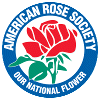 ARS Trial Membership Form |
Rose Care FUNdamentalsby Frank Brines, Consulting Rosarian W
eather is very important in gardening. So far this year weather hasn't been very stable for gardening in the Temecula Valley. Lately we have had some very warm daytime temperatures and some warmer than usual nights. The temperatures are sure to become hot soon, especially going into August. With the heat our gardens are going to need a rest. Roses do not perform their best during high temperatures. You have surely noticed smaller blossoms with crisp petals and degrading foliage during the summer months. W
eather is very important in gardening. So far this year weather hasn't been very stable for gardening in the Temecula Valley. Lately we have had some very warm daytime temperatures and some warmer than usual nights. The temperatures are sure to become hot soon, especially going into August. With the heat our gardens are going to need a rest. Roses do not perform their best during high temperatures. You have surely noticed smaller blossoms with crisp petals and degrading foliage during the summer months.
To assist the plants in their struggle I suggest that during July and August you let your roses rest by not removing the spent flowers and allowing them to form rose hips. The hips are the seed pods below the petals. Only remove the petals to maintain a cleaner garden bed and prevent any diseases from hiding in the rose debris or on the ground. Continue with consistent and adequate watering and reduced feeding program. However, make some adjustment for fertilizing: Use a fertilizer low in Nitrogen (N), high in Phosphate (P), and higher in Potassium (K) than Nitrogen. (You can use organic or inorganic products, although I prefer organic.) If the package doesn't indicate the NPK, a good nurseryman or fertilizer supplier should be able to help determine this for you. Plan on a light to medium pruning in late August or early September. |
This should produce blooms in about six to eight weeks. The first time you fertilize after that pruning use a food with a high ratio of Nitrogen-whatever you used in the spring will be fine. (I will remind you of this in next month's column!) Anyone can use this procedure. Keep records of when and what you used to fertilize, water, prune, etc. E-mail me what you did and how it worked for you. I hope to get many reports, I'll use this information in future column. As a side note: A portion of my rose garden now has shade cloth installed over it. I have noticed a difference in the quality of blooms and foliage during July. There has been a reduced burning of petals from the intense direct summer heat. I plan to extend this cover over the garden each July until cooler weather arrives in the fall. For more ideas, visit TVRS' Rose Haven garden at 30500 Jedediah Smith Road, Temecula, as well as our web site: TemeculaValleyRosesociety.org/index.shtml. |
Jump to page top.
